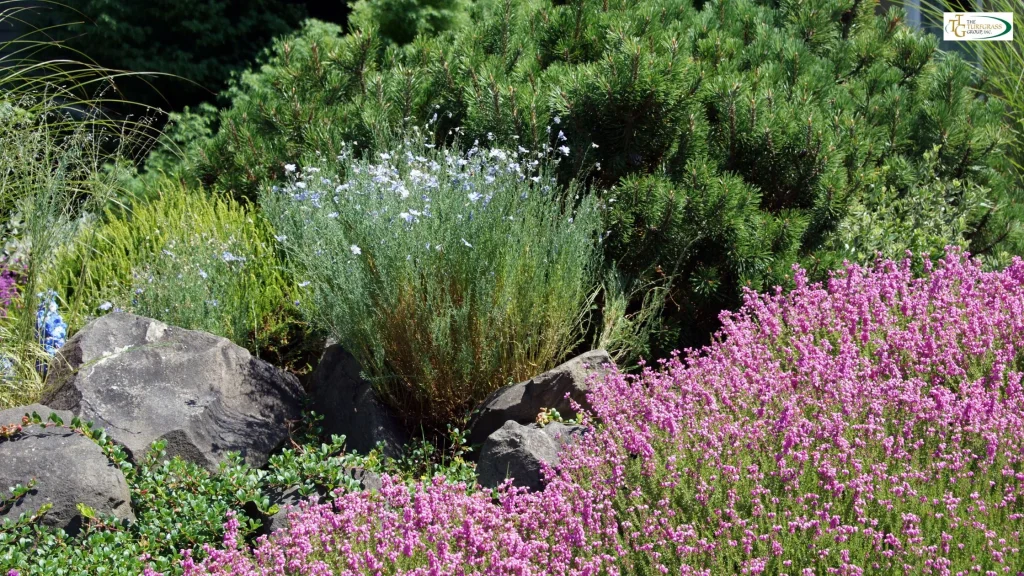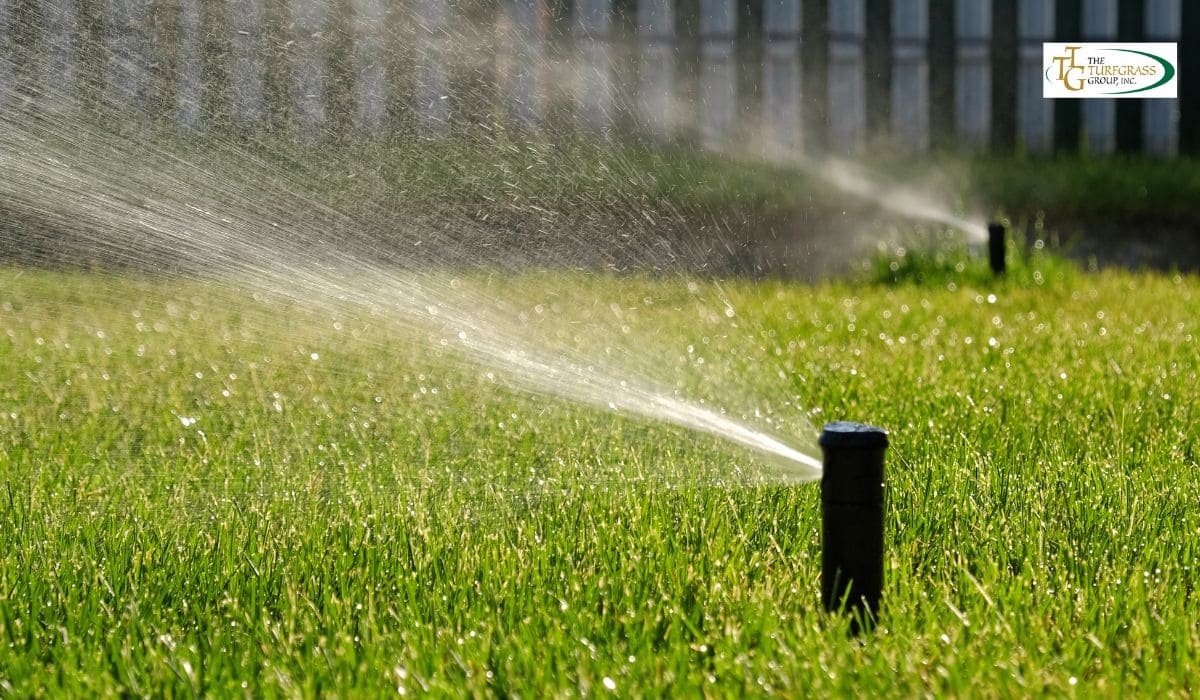
In an era where water scarcity is a pressing global issue, the concept of a drought tolerant lawn is gaining traction among homeowners, landscapers, and environmental advocates.
This shift is not just a trend but a necessity as communities grapple with dwindling water supplies and climate change.
At the forefront of this movement is the importance of Smart Drop Certification, a benchmark for sustainable water usage in lawn care.
In this article, we will explore why Smart Drop Certification is a game-changer for drought tolerant lawn practices and how it aligns with modern landscaping techniques.
Understanding Drought-Tolerant Lawns
A drought tolerant lawn is designed to thrive with minimal water.
Unlike traditional lawns that require regular watering, these lawns use specialized grass species and landscaping techniques that significantly reduce water consumption.
The backbone of a drought tolerant lawn lies in its foundation: drought tolerant lawn grass seed.
These seeds are specifically bred to withstand prolonged dry conditions without sacrificing aesthetic appeal.
Popular choices include fescues, Bermuda grass, and buffalo grass, all known for their ability to grow in arid climates while maintaining vibrant greenery.
For instance, TifTuf Bermuda grass, available at The Turfgrass Group, is an excellent choice for homeowners looking for a durable and drought-resistant option.
Its exceptional drought tolerance and vibrant appearance make it a standout in sustainable lawn care.
What is Smart Drop Certification and Its Principles?
Smart Drop Certification, also known as Smart Approved WaterMark, is a globally recognized standard for water-efficient practices in landscaping.
This certification ensures that products, systems, and practices meet stringent water-saving criteria, making them ideal for modern landscaping needs.
The Turfgrass Group, a leader in sustainable lawn solutions, holds the prestigious Smart Approved WaterMark certification for its innovative products, including drought tolerant lawn seed varieties.
Smart Drop Certification emphasizes responsible water usage, soil health, and eco-friendly landscaping.
It bridges the gap between aesthetic appeal and sustainability, ensuring that lawns not only look great but also contribute positively to environmental conservation.
Key Criteria for Certification
For a lawn or product to achieve Smart Drop Certification, it must adhere to the following principles:
- Efficient Water Use: Ensures minimal water consumption without compromising performance.
- Sustainability: Promotes the use of renewable resources and sustainable landscaping techniques.
- Quality Assurance: Certified products, like those offered by The Turfgrass Group, undergo rigorous testing to ensure they meet high standards of durability and resilience.
- Innovation: Encourages cutting-edge practices like smart irrigation systems and drought-resistant plants.
Why It’s Essential for Modern Lawns
Water scarcity is a growing concern, making efficient landscaping practices critical. Smart Drop Certification is essential for modern lawns as it ensures:
- Water Conservation: Certified lawns use significantly less water, reducing strain on local water supplies.
- Environmental Impact: By promoting sustainable practices, Smart Drop Certification helps mitigate climate change effects.
- Economic Benefits: Reduced water and maintenance costs make certified lawns an economical choice for homeowners.
With certified products like TifTuf Bermuda grass from The Turfgrass Group, homeowners can achieve vibrant, resilient lawns while prioritizing sustainability.
Common Misconceptions About Drought-Tolerant Lawns

Are They Really Green and Lush?
One of the most common misconceptions is that a drought tolerant lawn is brown, dry, or unattractive.
In reality, modern drought tolerant lawn grass seed varieties, such as those offered by The Turfgrass Group, are designed to maintain a lush, green appearance even under challenging conditions.
TifTuf Bermuda grass, for instance, is specifically bred to deliver vibrant greenery with minimal water.
Drought-tolerant lawns can be as visually appealing as traditional ones, especially when maintained properly with the right seeds, soil amendments, and watering techniques.
Do They Require Zero Maintenance?
While a drought tolerant lawn requires less maintenance compared to traditional lawns, it is not entirely maintenance-free. These lawns benefit from:
- Periodic mowing to maintain proper height.
- Occasional fertilization to promote growth.
- Smart irrigation to ensure optimal water delivery during dry spells.
Products certified by the Smart Approved WaterMark, like those from The Turfgrass Group, come with guidelines to make maintenance easier and more efficient.
Costs vs. Long-Term Benefits
Another myth is that establishing a drought tolerant lawn is prohibitively expensive. While the initial investment in drought tolerant lawn seed and irrigation systems might be higher, the long-term savings are substantial. Benefits include:
- Reduced water bills due to lower water requirements.
- Minimal maintenance costs over time.
- Enhanced property value, as buyers often seek sustainable landscaping solutions.
With innovative solutions like TifTuf Bermuda grass from The Turfgrass Group, homeowners can enjoy a cost-effective, environmentally friendly lawn that pays for itself in the long run.
Why Smart Drop Certification Matters
Encourages Responsible Water Usage: Smart Drop Certification ensures that every aspect of a lawn’s design and maintenance prioritizes water conservation. This aligns perfectly with the goals of a drought tolerant lawn, where the emphasis is on using as little water as possible without compromising beauty and functionality.
Promotes High-Quality Drought-Tolerant Lawn Grass Seed: Smart Drop Certification emphasizes using certified, high-quality seeds, like TifTuf Bermuda grass, that thrive under low-water conditions.
Enhances Property Value: Certified drought tolerant lawn solutions attract buyers seeking sustainable landscaping, reducing water bills and maintenance costs.
Supports Biodiversity: Certified lawns often incorporate native plants and grasses, fostering local ecosystems and enhancing ecological health.
Reduces Carbon Footprint: Minimized watering, mowing, and fertilizing reduce greenhouse gas emissions, contributing to environmental sustainability.
How to Achieve Smart Drop Certification for Your Drought Tolerant Lawn
Achieving Smart Drop Certification involves several steps, each designed to ensure sustainable practices. Here’s how you can get started:
Step 1: Choose the Right Grass Seed
Selecting the appropriate drought tolerant lawn grass seed is the first step. Opt for species that are suited to your region’s climate and soil conditions. Look for certified seeds that have been tested for drought resistance and resilience. Consider TifTuf Bermuda grass, which has been scientifically developed to deliver exceptional drought tolerance. Learn more about this variety at The Turfgrass Group.
Step 2: Optimize Soil Health
Healthy soil is critical for water retention and plant growth. Incorporate organic matter, such as compost, to improve soil structure and nutrient content. Testing your soil’s pH and nutrient levels can also help in selecting the right amendments.
Step 3: Install Efficient Irrigation Systems
Smart irrigation systems are a cornerstone of Smart Drop Certification. Drip irrigation, soaker hoses, and weather-based controllers ensure that water is delivered directly to the roots with minimal waste.
Step 4: Incorporate Native Plants
Native plants are naturally adapted to local conditions, making them an excellent addition to drought tolerant lawns. They require less water and are more resistant to pests and diseases.
Step 5: Follow Sustainable Maintenance Practices
Regular maintenance is essential to keep your lawn healthy and certified. Practices like mowing at the correct height, aerating the soil, and using organic fertilizers contribute to long-term sustainability.
Benefits of a Drought Tolerant Lawn
A drought tolerant lawn offers numerous advantages, from environmental benefits to financial savings. Here’s why more homeowners are making the switch:
1. Water Conservation
With a drought tolerant lawn, water usage can be reduced by up to 60%. This not only conserves a precious resource but also lowers your water bills.
2. Cost Savings
Reduced water and maintenance requirements translate to significant cost savings over time. While the initial investment in drought tolerant lawn seed and irrigation systems may be higher, the long-term savings are substantial.
3. Aesthetic Appeal
Drought tolerant lawns are just as beautiful as traditional lawns. With the right mix of grasses and native plants, you can create a lush, green landscape that thrives even in dry conditions.
4. Low Maintenance
These lawns require less mowing, fertilizing, and weeding, making them an ideal choice for busy homeowners.
5. Environmental Impact
By reducing water usage and supporting biodiversity, drought tolerant lawns contribute positively to the environment. They also help mitigate the effects of climate change by reducing water and energy consumption.
Future of Landscaping: The Role of Smart Drop Certification
As the world continues to face water challenges, sustainable landscaping practices will become increasingly important.
Smart Drop Certification is leading the way by setting high standards for water efficiency and ecological health.
For homeowners and landscapers, this certification is more than just a label—it’s a commitment to sustainability and innovation.
By adopting Smart Drop-certified practices, we can transform our outdoor spaces into havens of beauty and resilience while addressing the critical issue of water scarcity.
Conclusion
A drought tolerant lawn is more than just a practical solution to water scarcity—it’s a step toward a sustainable future.
With Smart Drop Certification, homeowners can ensure that their lawns are not only beautiful but also environmentally responsible.
Investing in high-quality drought tolerant lawn grass seed, like TifTuf Bermuda grass available at The Turfgrass Group, and adopting sustainable landscaping practices are essential steps in achieving this goal.
As we embrace the principles of Smart Drop Certification, we move closer to a world where green spaces thrive harmoniously with the environment, even in the face of climate challenges.
Make the switch today and contribute to a greener, more sustainable future—one drought-tolerant lawn at a time.
FAQs on Smart Drop Certification and Drought-Tolerant Lawns
1. What is a drought-tolerant lawn?
A drought-tolerant lawn is designed to thrive with minimal water. It uses specialized grass species, such as TifTuf Bermuda grass, and sustainable landscaping techniques to reduce water consumption without compromising aesthetics.
2. What is Smart Drop Certification?
Smart Drop Certification, also known as Smart Approved WaterMark, is a globally recognized standard for water-efficient practices in landscaping. It certifies products, systems, and techniques that meet stringent water-saving and sustainability criteria.
3. Why is Smart Drop Certification important for drought-tolerant lawns?
Smart Drop Certification ensures that your lawn is designed and maintained using water-efficient and sustainable practices. It guarantees that the lawn not only conserves water but also supports biodiversity and minimizes environmental impact.
4. Is a drought-tolerant lawn hard to maintain?
No, drought-tolerant lawns are low-maintenance compared to traditional lawns. They require less water, occasional mowing, and minimal fertilization. However, regular care, such as soil optimization and smart irrigation, helps maintain their health and appearance.
5. Do drought-tolerant lawns look as good as traditional lawns?
Yes, modern drought-tolerant lawns can be just as lush and green as traditional lawns. Using high-quality grass seed, like TifTuf Bermuda grass, ensures a vibrant, attractive lawn even with limited water.